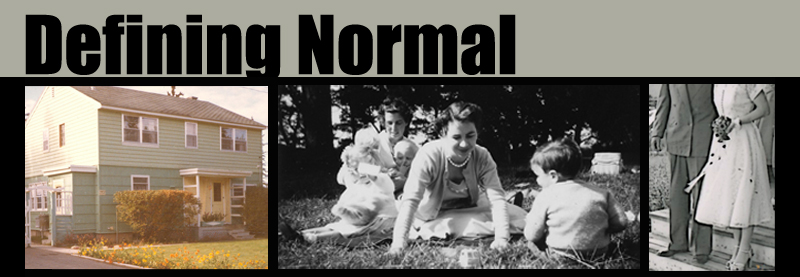More for the Mind: Home > Defining Normal Home > Defining Normal: Lesson 4
Lesson Four: Using What You’ve Learned
Approximately one hour + assignment time
 Discussion: Review (10-15 minutes)
Discussion: Review (10-15 minutes)
- Review the previous lessons on the topic, particularly lesson three.
- Redraw the teacher created timeline.
- Draw attention to how the spaces are equal and represent a single year even if there is no event to record that year.
- Ask students for ideas to illustrate the significant events.
- Explain that students will create their own timeline which they can illustrate with pictures from the website or with drawings.
 Activity: (30-45 minutes)
Activity: (30-45 minutes)
- Students will create an illustrated timeline noting significant events since the 1950s effecting the perception of homosexuality.
- Use the rubric to explain the expectations.
- Students may work on their own or with a partner.
- The timeline should have a specified number of events and each event should be illustrated.
- Creativity should be encouraged. Some ideas for students- use flaps for the events and encourage the viewer to guess what happened on that date; use a string for a timeline with important dates tied at appropriate points; a vertical timeline; a cartoon strip ‘walk through’ of the events
- Allow students to work.
 Closing: (5 minutes)
Closing: (5 minutes)
- Review the rubric.
- Explain how students should self evaluate.
- They should give themselves a five if they have done everything that was asked for plus a little extra.
- They should give themselves a four if they have completed everything to a high level.
- A three means they’ve done everything, but some things aren’t their best effort.
- A student should not rate themselves a one or two; they should correct the problems before handing in the time line.
- Assign a due date.
 Extension Activities:
Extension Activities:
- Students could create:
- a poster summarizing one resource and showing how it fits in with society’s changing perceptions
- a dramatization of a teen instructional video of how-to-be-normal
- a community/school-wide initiative aimed at discussing acceptance and behaviour awareness
- formal essay on the standards of madness related to gender/sexuality during this period.
- a digital multimedia collage of “normal” in the 1950s and a personal response about what and who are “abnormal” and the effects of this on society
- Find resources for LGTBQ youth in your area. Ask if your students can partner with them to display their work.
 Reaching All Learners
Reaching All Learners
- All students will benefit from review of the timeline format and an example of an illustrated timeline. Many textbooks or history books have illustrated timelines. Ask your school librarian for some good examples.
- Some students might benefit from having a blank timeline with spacing and dates pre- loaded.
- Others might benefit from using point form rather than sentences for the supporting activity.
- By allowing students the choice to work by themselves or with a partner, some anxiety around the project will be reduced.
 Resources for Using What You’ve Learned
Resources for Using What You’ve Learned
- Suggested rubric for student letters
Asking the students to evaluate their own work is a valuable tool to ensure that they use the rubric to design their timelines. It also asks them to reflect on their effort and result. However, the rubric can also be modified and used solely by the teacher.
